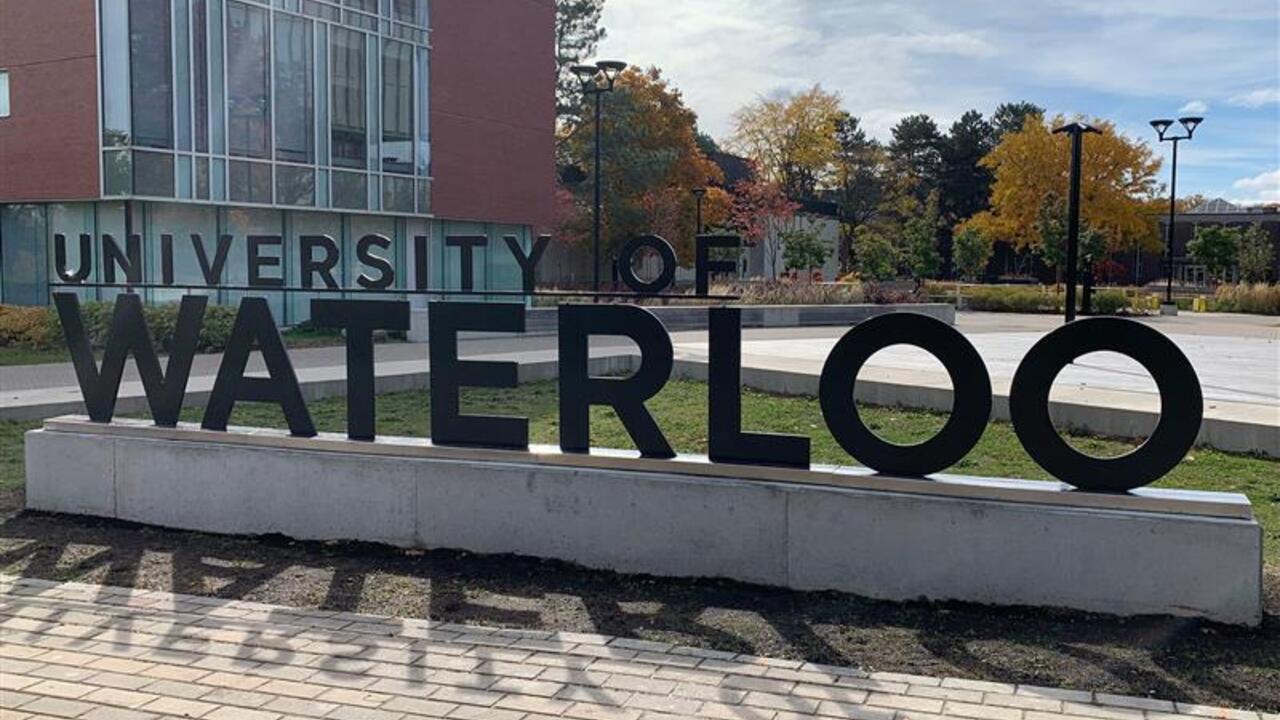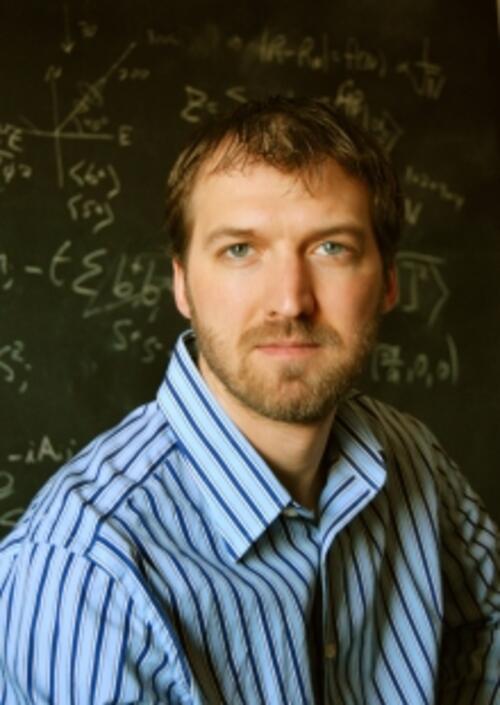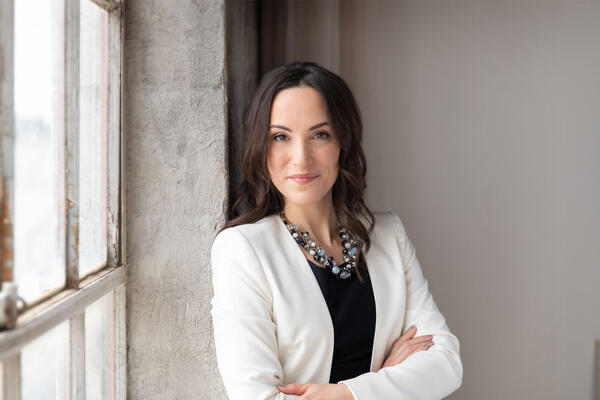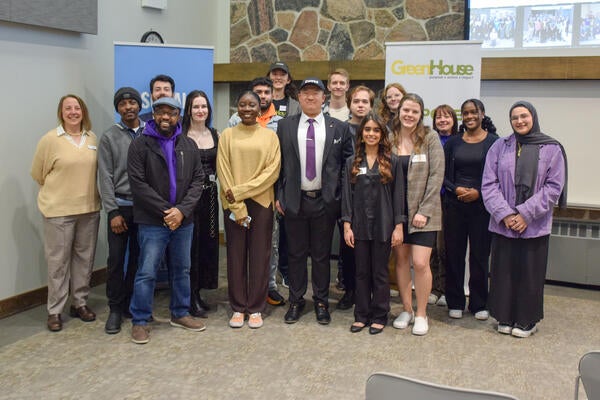
Waterloo supercomputer succeeds in splitting the electron
A three-member international team of theoretical physicists made a notable discovery about the unusual behaviour of electrons.

A three-member international team of theoretical physicists made a notable discovery about the unusual behaviour of electrons.
By Media RelationsWATERLOO, Ont. (Friday, Jan. 13, 2012) - A three-member international team of theoretical physicists, including a University of Waterloo professor, made a notable discovery about the unusual behaviour of electrons, with implications for all of physics. Their findings appear today in Science, one of the world’s pre-eminent journals for original, peer-reviewed scientific research.
This work is a significant step in allowing physicists the rare opportunity to study seemingly impossible fractional particles. The research team includes professor Roger G. Melko of the Department of Physics and Astronomy at Waterloo, professor Matthew Hastings of the Department of Physics at Duke University in Durham, N.C. and also of Microsoft Research at the University of California, and lead author Sergei Isakov, a post-doctoral research associate with the Institut fur Theoretische Physik in Zurich, Switzerland. They used the computer power and capacity that Compute Canada's Ontario-based supercomputing consortium SHARCNET provides to produce a simulation study that uncovered significant information about fractional particles when cooled to near absolute zero.
The researchers successfully created a simulated crystal of quantum material, which had just the right properties to be tuned to an unusual quantum state near absolute zero. When a particle with the fundamental electron charge was placed in that state, the team observed it fractionalize - or split itself - into two separate objects, each with a charge of half an electron. The researchers were then able to measure several values relating to the motion of the fractional particle. These numbers are universal, and so physicists can apply them across other areas of physics.
“What we have shown is not just that fractional particles can be created in a computer, but that they can affect universality at a phase transition. That means certain properties transcend the specifics of the system, in our case the simulated material,” said Melko. “These properties will be present in other systems - physical, chemical, biological - that contain the same type of fractional particle. Thus, our work can be used to guide future studies looking for these odd half-electrons across a variety of disciplines.”
Rather than study high-energy systems, the team took advantage of the fact that low-temperature matter can come together to exhibit remarkable collective behaviour as quasiparticles. The motion of these cooperating particles, when viewed from a distance, is essentially indistinguishable from that of a regular, free particle. And, as they demonstrated in this paper, under just the right conditions, these quasiparticles can contain a fraction of the fundamental electron charge.
“The potential impact of our work is still unknown. The discovery of fractionalization in the quantum Hall effect revolutionized the way we think of matter. It won a Nobel Prize, and we are still building on this success,” said Melko. “Understanding these fractional particles could influence our understanding of superconductivity, help us build better electronics, and even play a part in the design of quantum computers in the future.”
The researchers’ article entitled "Universal Signatures of Fractionalized Quantum Critical Points" follows the team's paper published last fall in the respected journal Nature Physics. That paper, which initially uncovered evidence for the existence of fractional particles in this low-temperature phase of matter was the result of months of collaboration and computer simulation work.
Image: Roger G. Melko

About Waterloo
In just half a century, the University of Waterloo, located at the heart of Canada's Technology Triangle, has become one of Canada's leading comprehensive universities with 34,000 full- and part-time students in undergraduate and graduate programs. Waterloo, as home to the world's largest post-secondary co-operative education program, embraces its connections to the world and encourages enterprising partnerships in learning, research and discovery. In the next decade, the university is committed to building a better future for Canada and the world by championing innovation and collaboration to create solutions relevant to the needs of today and tomorrow. For more information about Waterloo, visit www.uwaterloo.ca.
Media Contact:
Pamela Smyth
Media Relations Officer
University of Waterloo
519.888.4567, ext. 84777
psmyth@uwaterloo.ca
www.newsrelease.uwaterloo.ca
Waterloo news release no. 3

Read more
Pharmacy alum Stacey D'Angelo boosts patient health by deprescribing meds, focusing on holistic health, mental well-being and personalized medicine

Read more
With grants at stake, students pitch inventive startup ideas to bring their entrepreneurial visions into reality

Read more
GreenHouse awards more than $14,000 to five student founded ventures making an impact towards several UN Sustainable Development Goals
The University of Waterloo acknowledges that much of our work takes place on the traditional territory of the Neutral, Anishinaabeg and Haudenosaunee peoples. Our main campus is situated on the Haldimand Tract, the land granted to the Six Nations that includes six miles on each side of the Grand River. Our active work toward reconciliation takes place across our campuses through research, learning, teaching, and community building, and is co-ordinated within the Office of Indigenous Relations.